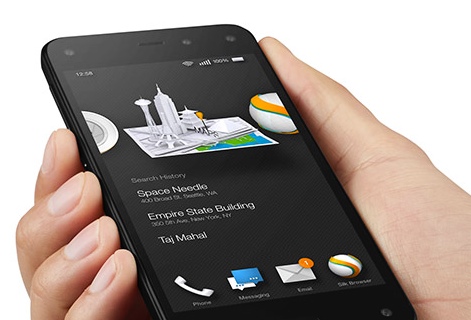What's right (and wrong) with the Amazon Fire Phone


Yesterday Amazon CEO Jeff Bezos unveiled Amazon's latest hardware device – the Fire Phone. Amazon is no stranger to hardware, having turned ebook readers into a mainstream device before going on to make an array of tablets. But the smartphone market is more crowded and competitive than any hardware market that Amazon has entered into before.
Does the Fire Phone have what it takes to shake up the smartphone market?
Tech Pro Research
Understand that this is a first impressions piece based on the hardware demonstrated by Amazon and the published spec of the device. I will update this piece as soon as the hardware is released and add some hands-on thoughts.
What's right with the Fire Phone?
- Good hardware: From a hardware standpoint, Amazon hasn't disappointed, producing a smartphone with quality hardware. The Fire Phone can stand its ground up against the likes of Apple's iPhone or the Samsung Galaxy S5.
- Focus on entertainment: The high-quality screen and dual stereo speakers make this a smartphone for people who want to consume content.
- Tied deep to Amazon's ecosystem: There's almost no aspect of Amazon's digital empire than the Fire Phone doesn't seep into, and that's good for tying owners to the Amazon brand.
- Innovation, but not too much innovation: It's clear that Amazon hasn't just come out with yet another smartphone. It's added some interesting new features to the Fire Phone – such as the dynamic perspective feature, or the Firefly technology that can recognizes printed web and email addresses, phone numbers, QR and bar codes, artwork, movies, music, and millions of products – without overloading users with too much new stuff.
- Innovation could lead to Fire Phone-specific apps: I can see there being apps built for the Fire Phone that could be exclusives based on technology such as the face tracking and Firefly. This could – if the phone and the apps gain enough traction – be a big hit.
- MayDay button: Not everyone's a tech-head, and some people will appreciate having a helping hand a click away.
- Free cloud storage for photos: Apple, are you listening?
What's wrong with the Fire Phone?
- Price: At $199 for the 32GB version, going up to $299 for the 64GB model, the price seems high, especially considering that this is contract pricing. For a new platform trying to gain traction, this is high. Doubly so when that platfrom is so tighty bound to a store.
- Off-contract pricing is insane: If you think the contract prices are insane, wait until you see the off-contract price – $649 for the 32GB model and $749 for the 64GB model.
- AT&T-only: This worked for Apple with the iPhone until it didn't. I wonder if that era of carrier exclusivity isn't over for all the player to be honest. It's highly restrictive to potential buyers, and offers little incentive (especially considering the prices).
- Android, but not Android: There are a lot of people who love the Fire OS platform, but I wonder how much they'll love it when they're migrating from an Android device to Fire OS. It will be a test for Amazon to see if Fire OS can gain acceptance among smartphone users.
- No Micro SD card slot: Which means having to pay the $100 for storage if you're a heavy user.
- The Amazon brand is too full-on: Does the Fire Phone feel a little too much like an Amazon store in your pocket? It might. Striking the fine between giving users the opportunity to buy stuff and forcing stuff down their throats is hard, and it relains to be seen if Amazon has achieved this.
The bottom line:
There's no doubt that Amazon also has steep challenges to face. The first is that as a single retailer it will have to shift tens of millions of handsets in order to make a dent in either the iOS or Android ecosystem. If we just look at Android alone, there are now over 1.5 million devices being activated daily. Then let's not forget that the Android ecosystem is dominated by a single player – Samsung. I've lost count of the myriad of tablets and smartphones this company currently has on offer. And it's a company that has a reputation for making good products.
Amazon is using easy access to its empire as a lure, but whether this is a big enough pull to get users to swap their smartphones for the Fire Phone remains to be seen. There's also a worry that Amazon has packed too much of itself into the Fire Phone, and that users will feel that they are paying a premium for the privilege of being allowed to spend more money with Amazon.
See also:
- Inside Apple's new cheaper iMac
- Amazon's Fire Phone hardware specification
- Amazon's Kindle smartphone shakes up the iOS/Android duopoly
- Health will be bigger for Apple than an iWatch or TV would ever be
- Eight reasons why iOS 8 is going to be a big hit with BYOD
- Six Clicks: The best of WWDC 2014
- Top Android tablets (June 2014 edition)
- Top Android smartphones (June 2014 edition)
- Windows Phone: The mobile world's third wheel
- Six clicks: Simple and time-saving Google search tricks
- Will my Mac run OS X 10.10 Yosemite?